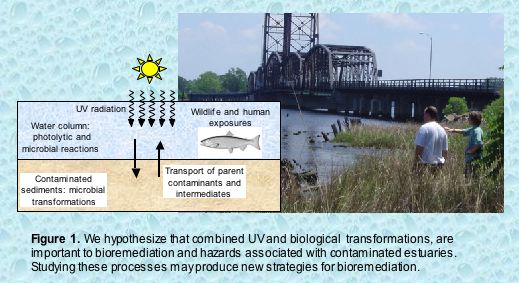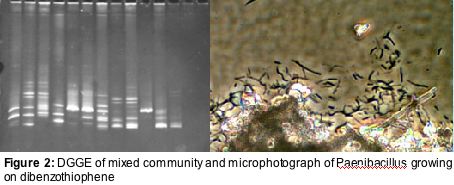Polyaromatic hydrocarbons (PAHs) are common pollutants arising from both natural and anthropogenic sources, including the incomplete combustion of coal, oil, and wood, improper storage or disposal of fuels and oils, and wood treatment processes. PAHs are of concern because many of them are toxic, they tend to bioaccumulate in aquatic organisms, and they can be particularly recalcitrant in contaminated environments. We are interested in the processes by which PAHs are transformed in the natural environment and in engineered bioremediation systems. In particular, we are looking into how photolytic (e.g., from natural sunlight) and microbial transformations (e.g., as in a contaminated estuary) may combine to either accelerate bioremediation or to produce toxic intermediates (Figure 1). This work is a Subproject of the Duke Superfund Basic Research Program in the Nicholas School of the Environment and Earth Sciences.

We are approaching this complex problem by studying the microbial populations responsible for PAH transformations and the photolytic reactivity and toxicity of their microbially-produced intermediates. This work includes genetic identification of the responsible bacteria using methods such as clone libraries, denaturing gradient gel electrophoresis (DGGE), and fluorescent in-situ hybridization and analytical identification of potentially novel intermediates. The expected benefits of this work will be an improved understanding of risks to ecosystem and human health posed by contaminated sediments, and development of new technologies for their remediation.
